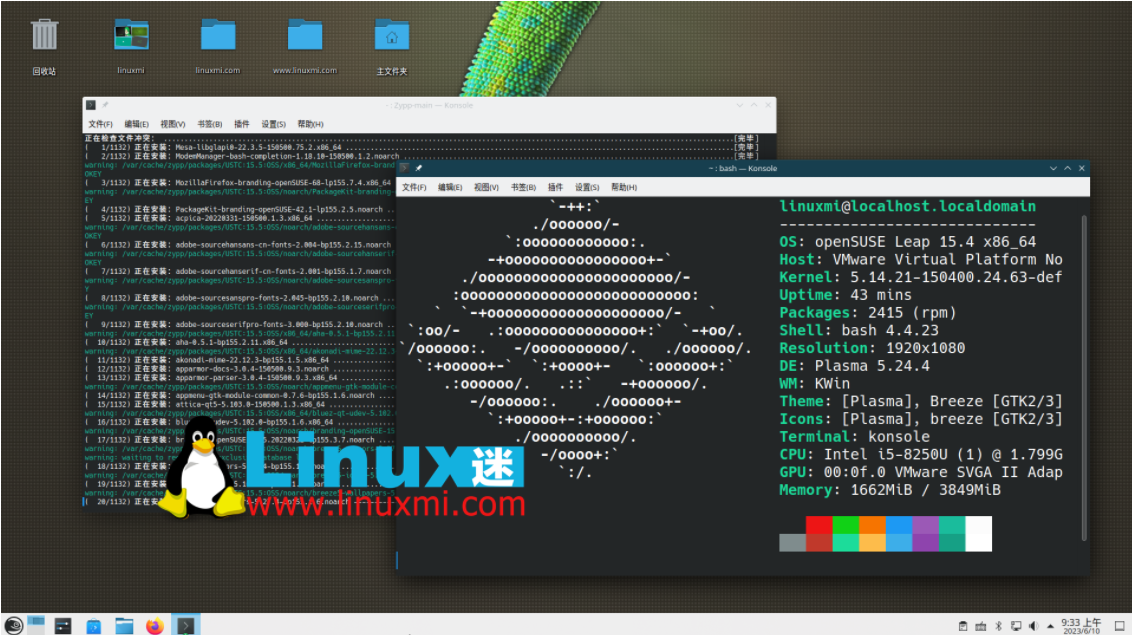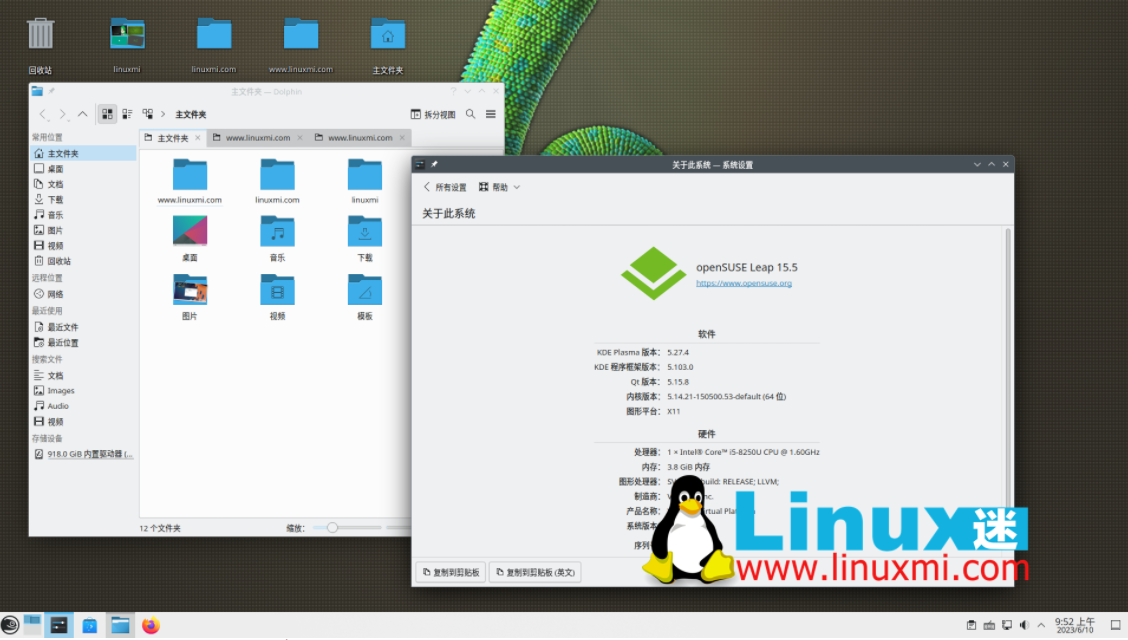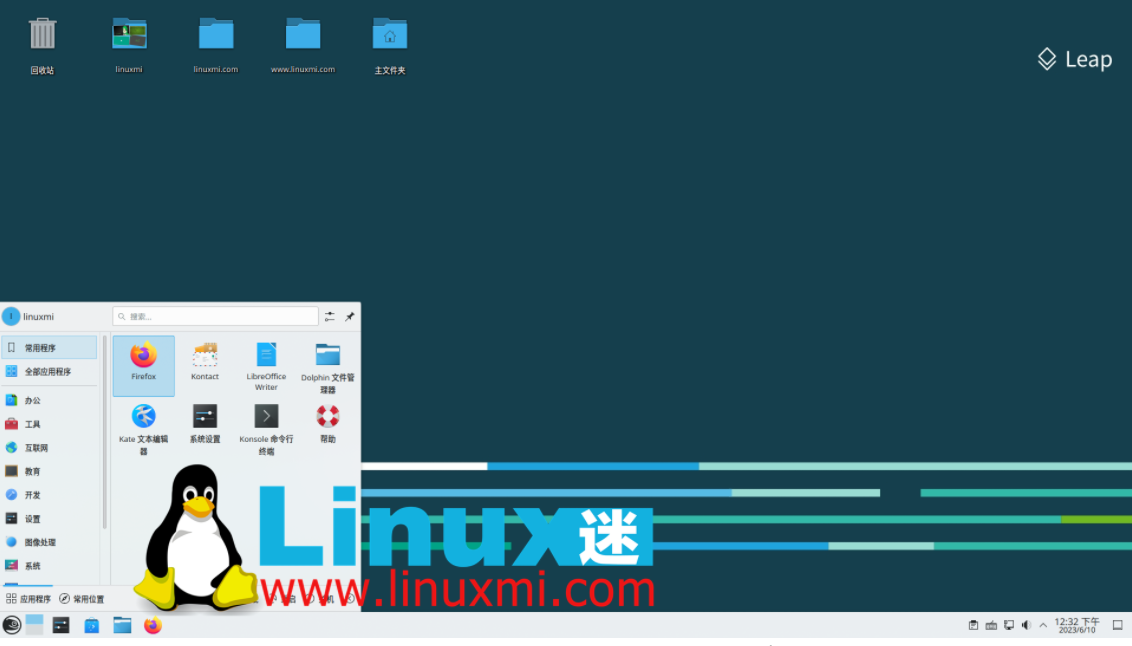openSUSE Leap 15.5: A hybrid distribution based on enterprise Linux
The openSUSE project today announced the release of openSUSE Leap 15.5, the latest stable version of this openSUSE variant. It is built on SUSE Linux Enterprise 15 for users who want a well-tested operating system on their personal computers.
openSUSE Leap 15.5 arrives a year after openSUSE Leap 15.4 and is built on binary packages for the SUSE Linux Enterprise 15 SP5 operating system. It uses the same Linux 5.14 kernel as Leap 15.4, but adds more drivers for better hardware support.

openSUSE Leap 15.4 upgrade to openSUSE Leap 15.5
The openSUSE project compared the Linux 5.14 kernel included in openSUSE Leap 15.5 with the upstream Linux 6.0 kernel series and said the most significant changes were in the area of GPU drivers, supporting AMD Radeon RX 7600, AMD Radeon RX New graphics cards such as 7900 XT/XTX, Intel ARC A380, Intel Arc A750 and Intel Arc A770.

openSUSE Leap 15.5 screenshots
An interesting feature in openSUSE Leap 15.5 is out-of-the-box support for NVM Express over Fabrics (NVMe-oF) installation and boot over TCP transport, compliant with NVMe-oF boot specification 1.0.
"This enables the flexibility to create and orchestrate diskless clients in SAN environments using the latest NVMe-oF technology. This feature requires support from the system's UEFI BIOS and configuration of the network and NVMe- oF target. The firmware uses this information to boot the kernel. The operating system obtains the configuration information from the firmware and uses it to mount the root file system via NVMe-oF," the openSUSE project stated.
On the software side, openSUSE Leap 15.5 uses the latest KDE Plasma 5.27 LTS desktop environment series, which will be supported for several years, as well as the latest Xfce 4.18 desktop environment series. Unfortunately for fans of the GNOME desktop, this version still uses the GNOME 41 series from openSUSE Leap 15.4.

Under the hood, this version doesn't include the latest and greatest GNU/Linux technologies like openSUSE Tumbleweed. Therefore, it uses dnf 4.10.0 package manager, systemd 249.10 init system, Mesa 22.3.5 graphics stack, as well as sudo 1.9.9, AppArmor 3.0.4, Perl 5.26.1, Python 3.6.15 (Python 3.9 is also supported , 3.10 and 3.11), Ruby 2.5, Go 1.17, Podman 4.4.4, CRI-O 1.22.0 and containerd 1.6.19.
For more details, you can view the full list of features. In the meantime, you can download openSUSE Leap 15.5 from the official website, which offers live ISO images with KDE Plasma, GNOME and Xfce desktop environments pre-installed, as well as rescue builds and offline installation images.
Like previous releases, openSUSE Leap 15.5 supports 64-bit desktops, PowerPC (ppc64le) servers, UEFI ARM 64-bit (AArch64) desktops, laptops, SBCs and servers, as well as IBM System z and LinuxONE (s390x) servers. Virtual machine images are also provided for download by those who want to virtualize openSUSE Leap.
The openSUSE project also announced plans to release another minor version, openSUSE Leap 15.6, in early June 2024.
The above is the detailed content of openSUSE Leap 15.5: A hybrid distribution based on enterprise Linux. For more information, please follow other related articles on the PHP Chinese website!

Hot AI Tools

Undresser.AI Undress
AI-powered app for creating realistic nude photos

AI Clothes Remover
Online AI tool for removing clothes from photos.

Undress AI Tool
Undress images for free

Clothoff.io
AI clothes remover

AI Hentai Generator
Generate AI Hentai for free.

Hot Article

Hot Tools

Notepad++7.3.1
Easy-to-use and free code editor

SublimeText3 Chinese version
Chinese version, very easy to use

Zend Studio 13.0.1
Powerful PHP integrated development environment

Dreamweaver CS6
Visual web development tools

SublimeText3 Mac version
God-level code editing software (SublimeText3)

Hot Topics
 1386
1386
 52
52
 Difference between centos and ubuntu
Apr 14, 2025 pm 09:09 PM
Difference between centos and ubuntu
Apr 14, 2025 pm 09:09 PM
The key differences between CentOS and Ubuntu are: origin (CentOS originates from Red Hat, for enterprises; Ubuntu originates from Debian, for individuals), package management (CentOS uses yum, focusing on stability; Ubuntu uses apt, for high update frequency), support cycle (CentOS provides 10 years of support, Ubuntu provides 5 years of LTS support), community support (CentOS focuses on stability, Ubuntu provides a wide range of tutorials and documents), uses (CentOS is biased towards servers, Ubuntu is suitable for servers and desktops), other differences include installation simplicity (CentOS is thin)
 How to use docker desktop
Apr 15, 2025 am 11:45 AM
How to use docker desktop
Apr 15, 2025 am 11:45 AM
How to use Docker Desktop? Docker Desktop is a tool for running Docker containers on local machines. The steps to use include: 1. Install Docker Desktop; 2. Start Docker Desktop; 3. Create Docker image (using Dockerfile); 4. Build Docker image (using docker build); 5. Run Docker container (using docker run).
 Centos options after stopping maintenance
Apr 14, 2025 pm 08:51 PM
Centos options after stopping maintenance
Apr 14, 2025 pm 08:51 PM
CentOS has been discontinued, alternatives include: 1. Rocky Linux (best compatibility); 2. AlmaLinux (compatible with CentOS); 3. Ubuntu Server (configuration required); 4. Red Hat Enterprise Linux (commercial version, paid license); 5. Oracle Linux (compatible with CentOS and RHEL). When migrating, considerations are: compatibility, availability, support, cost, and community support.
 How to install centos
Apr 14, 2025 pm 09:03 PM
How to install centos
Apr 14, 2025 pm 09:03 PM
CentOS installation steps: Download the ISO image and burn bootable media; boot and select the installation source; select the language and keyboard layout; configure the network; partition the hard disk; set the system clock; create the root user; select the software package; start the installation; restart and boot from the hard disk after the installation is completed.
 How to view the docker process
Apr 15, 2025 am 11:48 AM
How to view the docker process
Apr 15, 2025 am 11:48 AM
Docker process viewing method: 1. Docker CLI command: docker ps; 2. Systemd CLI command: systemctl status docker; 3. Docker Compose CLI command: docker-compose ps; 4. Process Explorer (Windows); 5. /proc directory (Linux).
 Detailed explanation of docker principle
Apr 14, 2025 pm 11:57 PM
Detailed explanation of docker principle
Apr 14, 2025 pm 11:57 PM
Docker uses Linux kernel features to provide an efficient and isolated application running environment. Its working principle is as follows: 1. The mirror is used as a read-only template, which contains everything you need to run the application; 2. The Union File System (UnionFS) stacks multiple file systems, only storing the differences, saving space and speeding up; 3. The daemon manages the mirrors and containers, and the client uses them for interaction; 4. Namespaces and cgroups implement container isolation and resource limitations; 5. Multiple network modes support container interconnection. Only by understanding these core concepts can you better utilize Docker.
 What computer configuration is required for vscode
Apr 15, 2025 pm 09:48 PM
What computer configuration is required for vscode
Apr 15, 2025 pm 09:48 PM
VS Code system requirements: Operating system: Windows 10 and above, macOS 10.12 and above, Linux distribution processor: minimum 1.6 GHz, recommended 2.0 GHz and above memory: minimum 512 MB, recommended 4 GB and above storage space: minimum 250 MB, recommended 1 GB and above other requirements: stable network connection, Xorg/Wayland (Linux)
 What to do if the docker image fails
Apr 15, 2025 am 11:21 AM
What to do if the docker image fails
Apr 15, 2025 am 11:21 AM
Troubleshooting steps for failed Docker image build: Check Dockerfile syntax and dependency version. Check if the build context contains the required source code and dependencies. View the build log for error details. Use the --target option to build a hierarchical phase to identify failure points. Make sure to use the latest version of Docker engine. Build the image with --t [image-name]:debug mode to debug the problem. Check disk space and make sure it is sufficient. Disable SELinux to prevent interference with the build process. Ask community platforms for help, provide Dockerfiles and build log descriptions for more specific suggestions.




